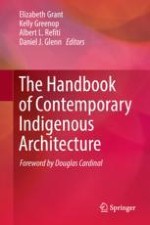2018 | OriginalPaper | Buchkapitel
18. Enough Is Enough: Indigenous Knowledge Systems, Living Heritage and the (Re)Shaping of Built Environment Design Education in Australia
verfasst von : Grant Revell, Scott Heyes, David Jones, Darryl Low Choy, Richard Tucker, Susan Bird
Erschienen in: The Handbook of Contemporary Indigenous Architecture
Verlag: Springer Singapore
Aktivieren Sie unsere intelligente Suche, um passende Fachinhalte oder Patente zu finden.
Wählen Sie Textabschnitte aus um mit Künstlicher Intelligenz passenden Patente zu finden. powered by
Markieren Sie Textabschnitte, um KI-gestützt weitere passende Inhalte zu finden. powered by
